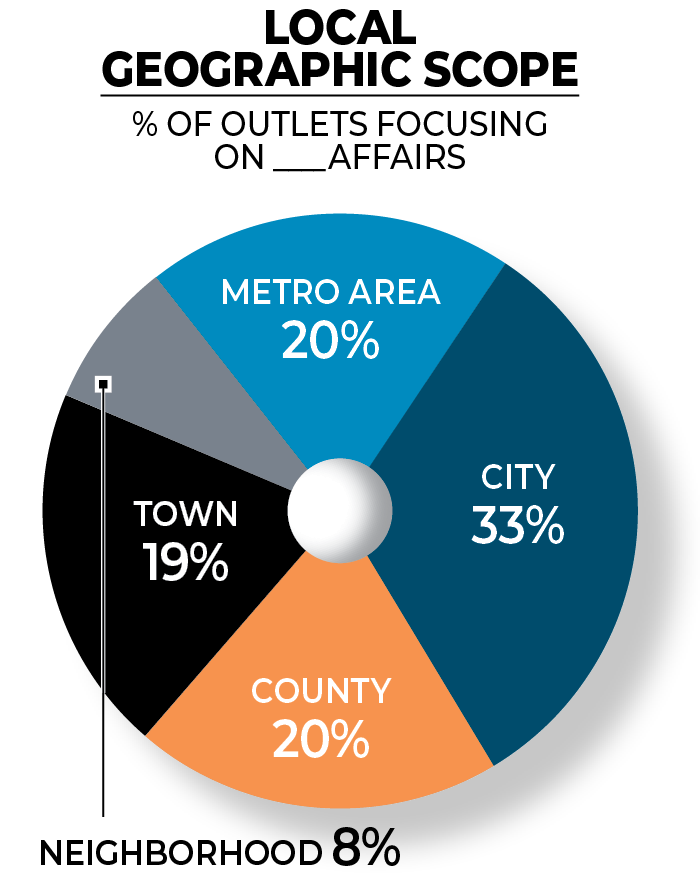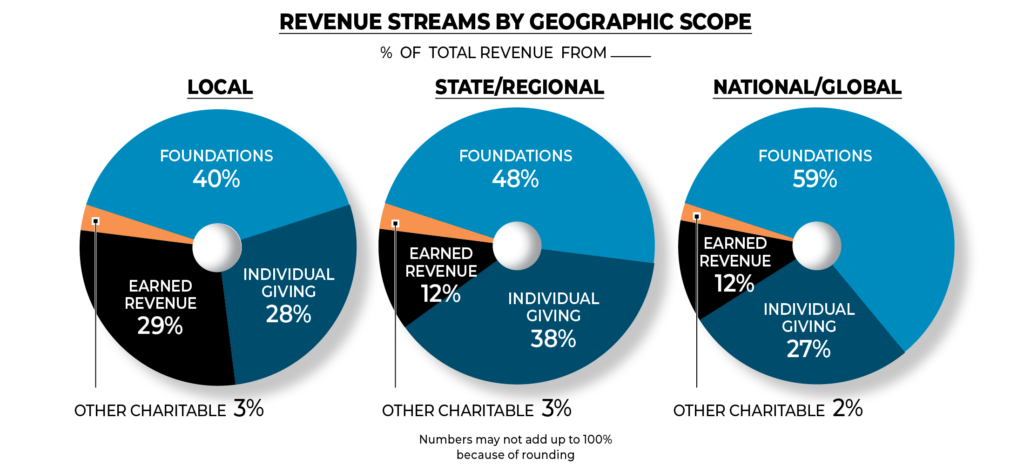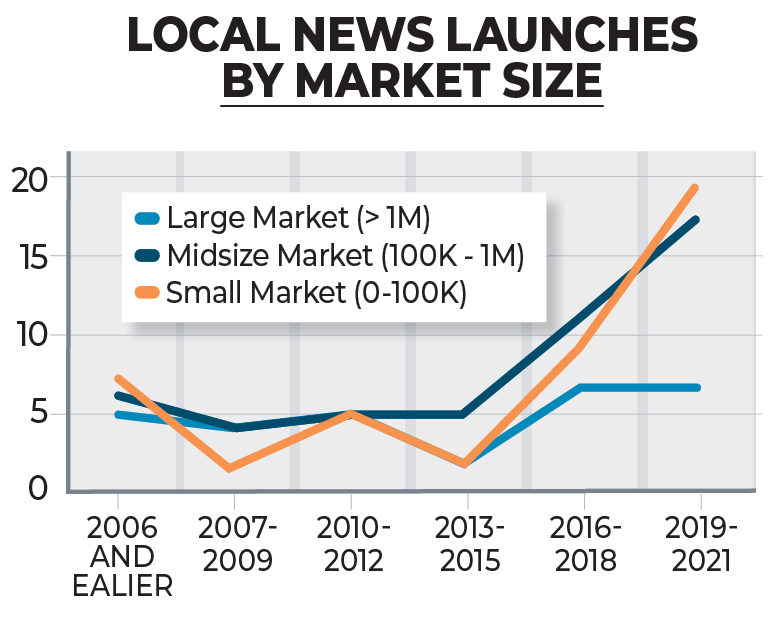INN Index 2022: Enduring in crisis, surging in local communities
Surge in Local Outlets
Running parallel to the track of larger, more established organizations growing revenue and audiences is a different kind of growth: Smaller, local news outlets starting up, many serving smaller populations and spreading into smaller markets than most outlets that launched in earlier years.
Local news outlets stand out within the sector, doubling in number since 2017. Local newsrooms now make up 42% of outlets surveyed. In 2017, they made up less than a quarter. INN projects local will make up the majority of nonprofit news organizations in 2024.
Use INN’s Member Map to see where local, nonprofit outlets are based. INN’s network map shows member newsrooms across North America to help convey the expanding coverage of the nonprofit news field. Jump here to see the INN Member Map.
In raw numbers, local news outlets tend to have smaller staffs and lower revenue than state, regional, national and global peers – not surprisingly. About half operate on budgets of less than $250,000 per year, with about a quarter of local news outlets running on less than $100,000. The geographic focus of local outlets tends to correlate with the organization’s budget and staff size: outlets covering metro or city areas operate on larger budgets than their hyperlocal, neighborhood and town counterparts.

Despite slim budgets, locals invest resources to cast wide revenue nets: they’re more likely than counterparts to have four or more revenue streams, largely due to their ability to bring in advertising dollars.

Over the last several years, locals have launched in areas fairly well-distributed across the five main geographic regions of the U.S., splitting out across regions more or less in line with population sizes. But in the past two years, locals have launched the most in the Southeast and Western regions: the number of local startups doubled in these regions compared to the previous two-year period.

Growth in local news means more nonprofit outlets are now serving smaller communities and operating in smaller markets than before. More than a third of local nonprofit outlets serve markets with populations under 100,000. In contrast, the pace of growth in the number of larger local outlets providing coverage for places with at least 1 million residents has been the same since 2018.
Local outlets serve communities of color
Local nonprofit news outlets are more likely to say coverage of a community or communities of color is a primary mission. Today, about 3 in 10 local organizations have that focus compared with 2 in 10 across the rest of the field. Local startups, in particular, are driving this audience focus: out of the 32 startup outlets with a primary focus on covering communities of color, 20 are locally focused organizations.
What does serving communities of color look like in practice? It varies – from creating new coverage areas, distribution channels, partnerships, fellowships, and above all, creating trust in communities served. Learn more about how six INN member outlets serve communities of color in this Q&A series.
Outlets like Cicero Independiente, a bilingual newsroom serving Spanish-speaking immigrant communities in Cicero, Illinois, exemplify these efforts. Co-founder Irene Romulo said other media outlets were not meeting the informational needs of immigrant communities and were too focused on immigrants’ trauma. The outlet, launched in 2019, surveys and conducts outreach with community members, mainly Latinx, to find and fill their information needs.
Canopy Atlanta launched in 2020 as a community journalism nonprofit working to train and equip residents from Black, brown, immigrant and working-class communities in metro Atlanta to access information and tell their own stories. Already, Canopy has become a trailblazer developing new models of journalism – local communities across Atlanta help the Canopy team choose story topics, and Canopy then trains and pays residents known as Journalism Fellows to tell those community stories alongside experienced journalists. Those stories are then shared back with the community through events, partnerships, printed material and more.
Founders of local outlets are motivated to fill community information needs. Why the surge in local, nonprofit news? Our reporting points to a few key drivers, including founders noticing critical information needs in their communities not being filled by legacy or commercial media. Jump here to read more about lessons from local startup founders.
